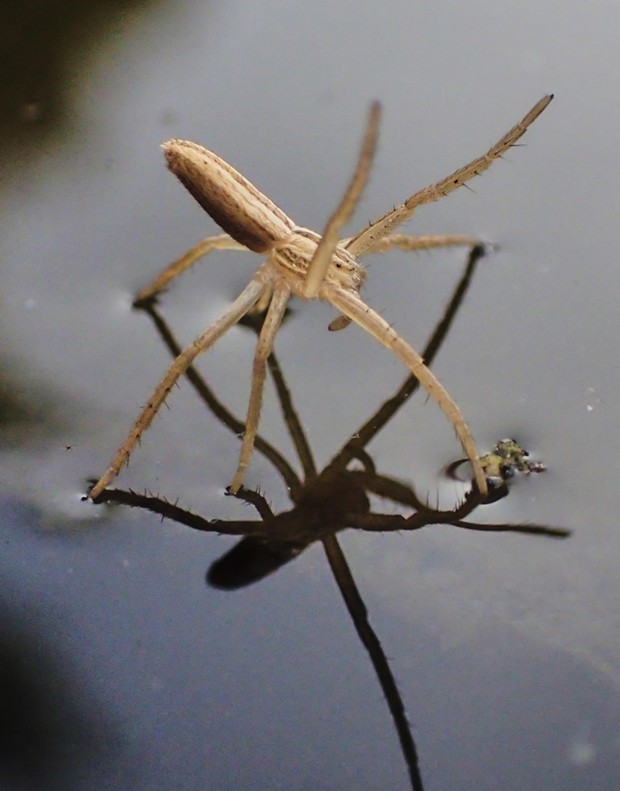
- Photo by Anthony Westkamper
- Slender crab spider, two legs up in the air.
Winter time is a slow time for bugs. Being cold blooded the chemistry of life that powers them slows down. Many of their life cycles are adapted to spending the short cold days in their sedentary forms as eggs, larvae or pupae. Those that persist as adults mostly hide through the worst of it, emerging occasionally on unseasonably warm days to the false hope of an early spring. Finding those that are active at this time can be challenging. Sometimes though, they find me.
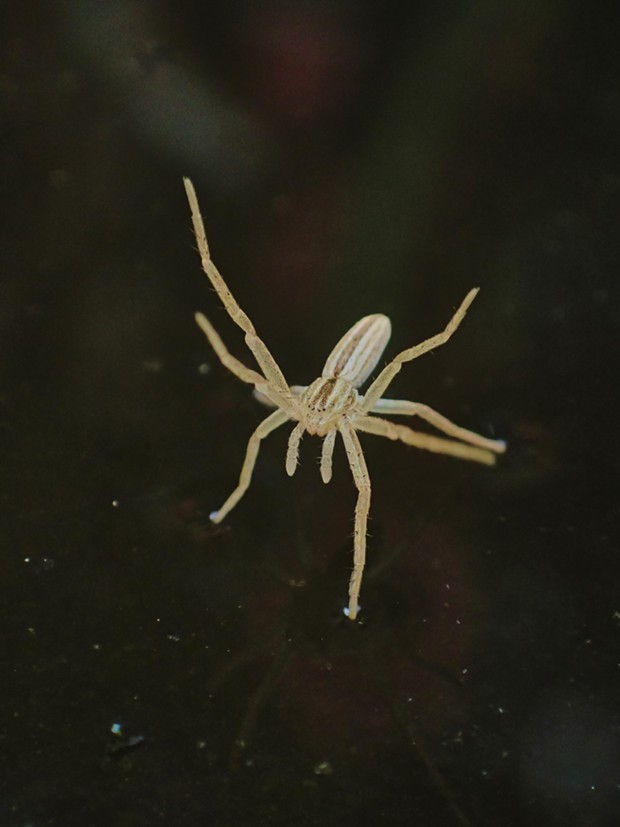
- Photo by Anthony Westkamper
- Slender crab spider, four legs in the air.
Arranging plants in a claw foot bath tub, I noticed a small pale spider standing on the water's surface. It didn't skate like a water strider but floated going wherever the faint breeze pushed it. So I gently blew at it. It threw up a pair of legs catching the air like a sail. I repeated the experiment several times and each time, no matter which side I blew from, the little critter threw up its arms in response. I suspect they have a hard time moving about on the nearly frictionless surface and so have adapted an instinctive behavior which allows them to catch the breezes to sail about. When I reviewed the numerous photos I'd taken, I noted that in different frames it had raised different combinations of its legs, from one to four, I guess as a way of controlling its direction.
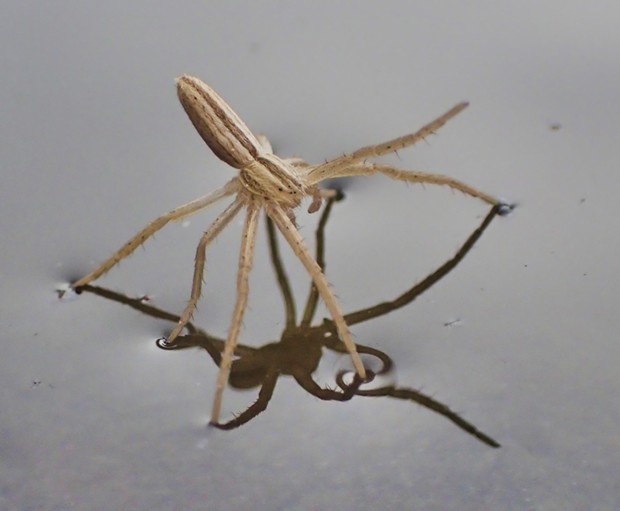
- Photo by Anthony Westkamper
- Slender crab spider, one leg up.
Studying my favorite spider eye chart got me to the family Philodromidae, aka running crab spiders, and following that name through BugGuide.net came to the conclusion this is a slender crab spider, genus
Tibellus. It may be
Tibellus californicus but I haven't found a photo on line or in any of my references yet.
As soon as I got done playing with the spider a large yellow jacket landed on the edge of the tub and commenced cleaning her antennae. If she survives the winter, she will continue on to establish a new hive and become their queen.
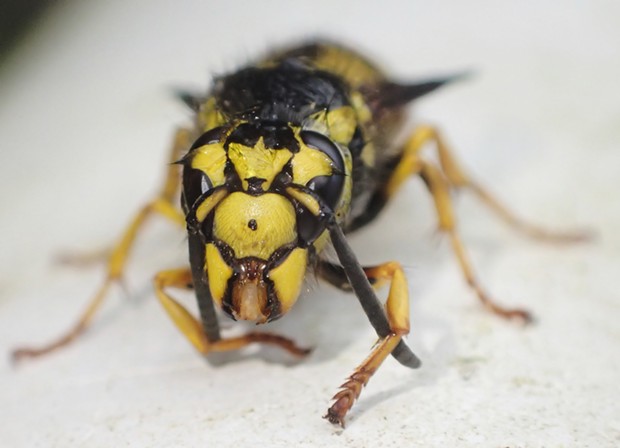
- Photo by Anthony Westkamper
- Next year's queen cleans her antennae.
On the way out the door last night, my son pointed out a bug on the doorframe. Although it wasn't the common squash bug or box elder bug, its shape definitely placed it in the order hemiptera. It turns out to be a Western conifer seed bug (
Leptoglossus occidentalis). A pest native to the West Coast has been exported to places as far away as Tokyo and Serbia.
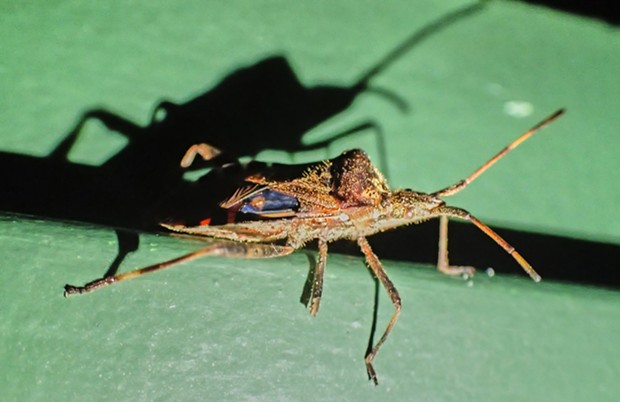
- Photo by Anthony Westkamper
- Western conifer seed bug Leptoglossus occidentalis.






Comments
Showing 1-1 of 1